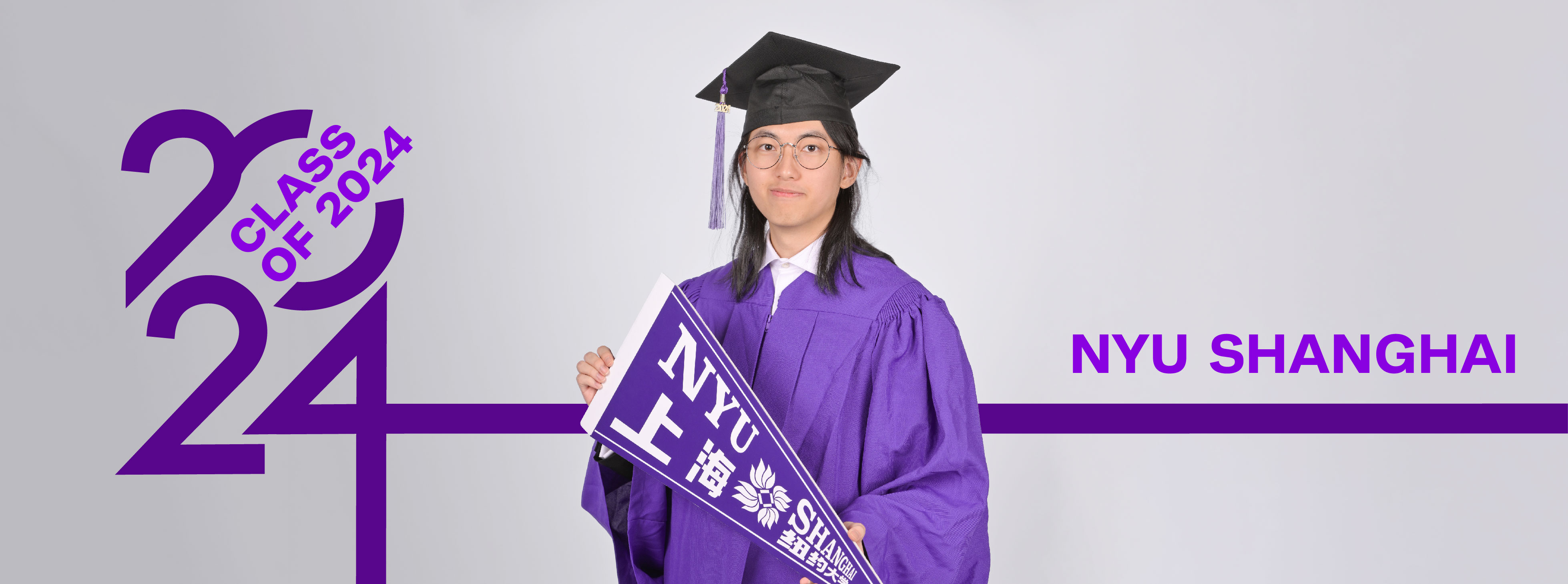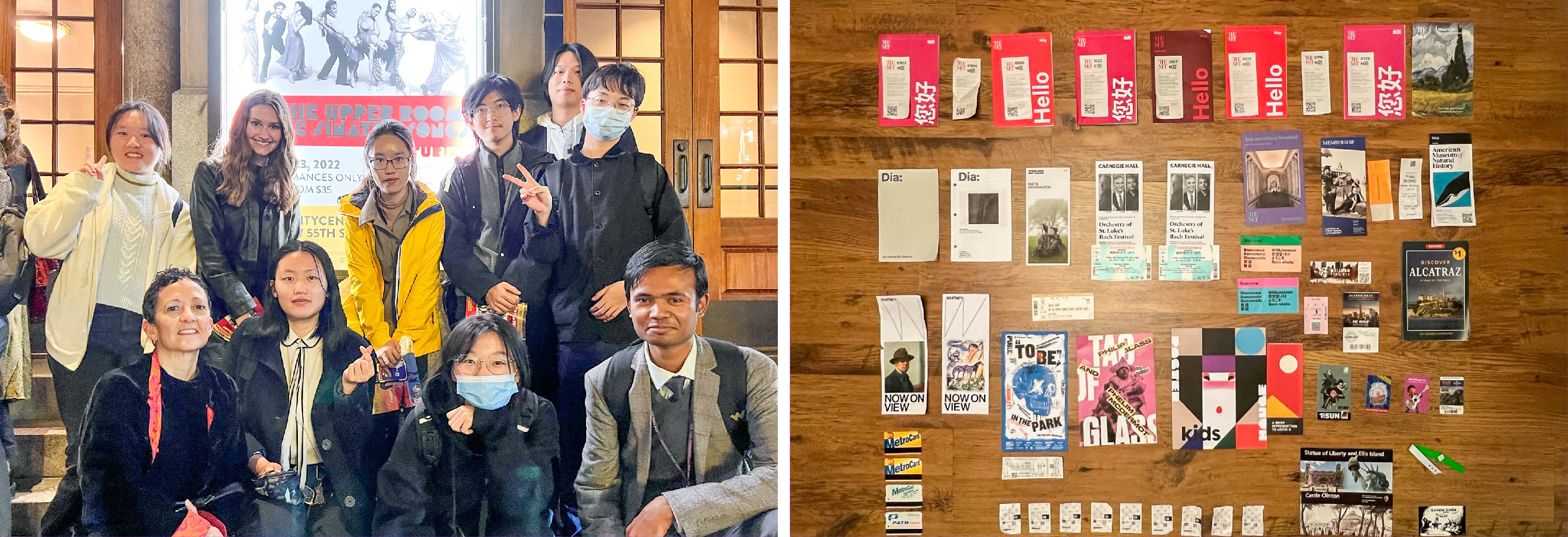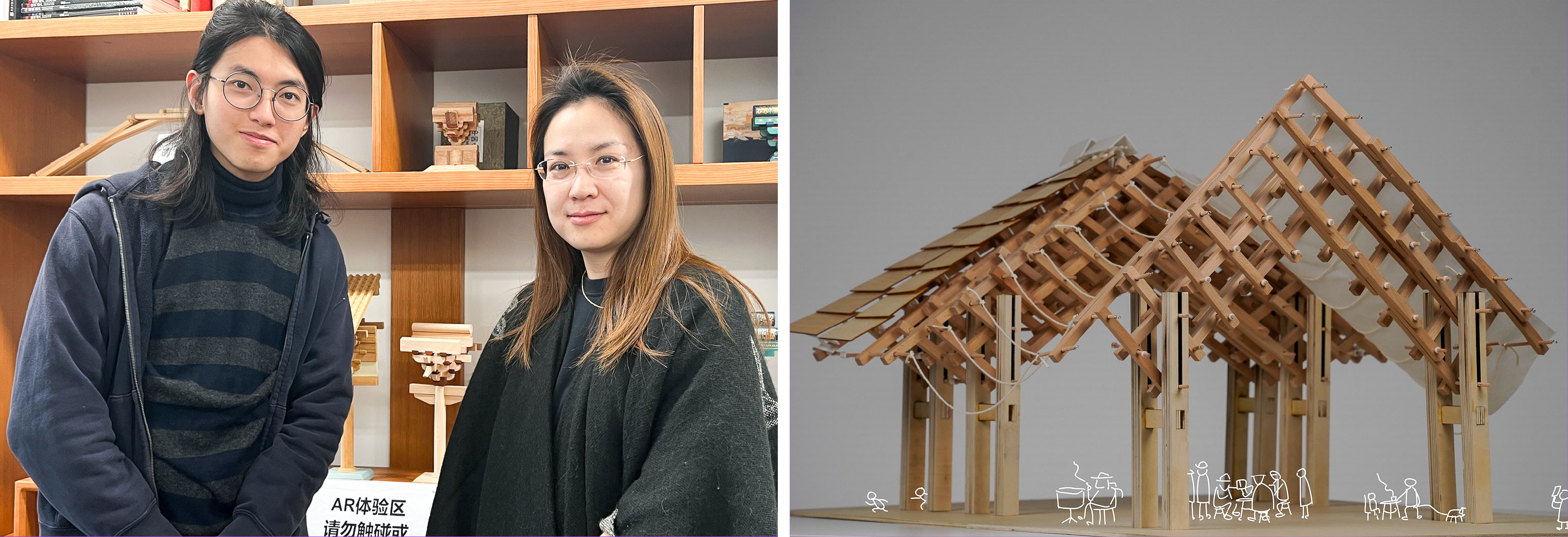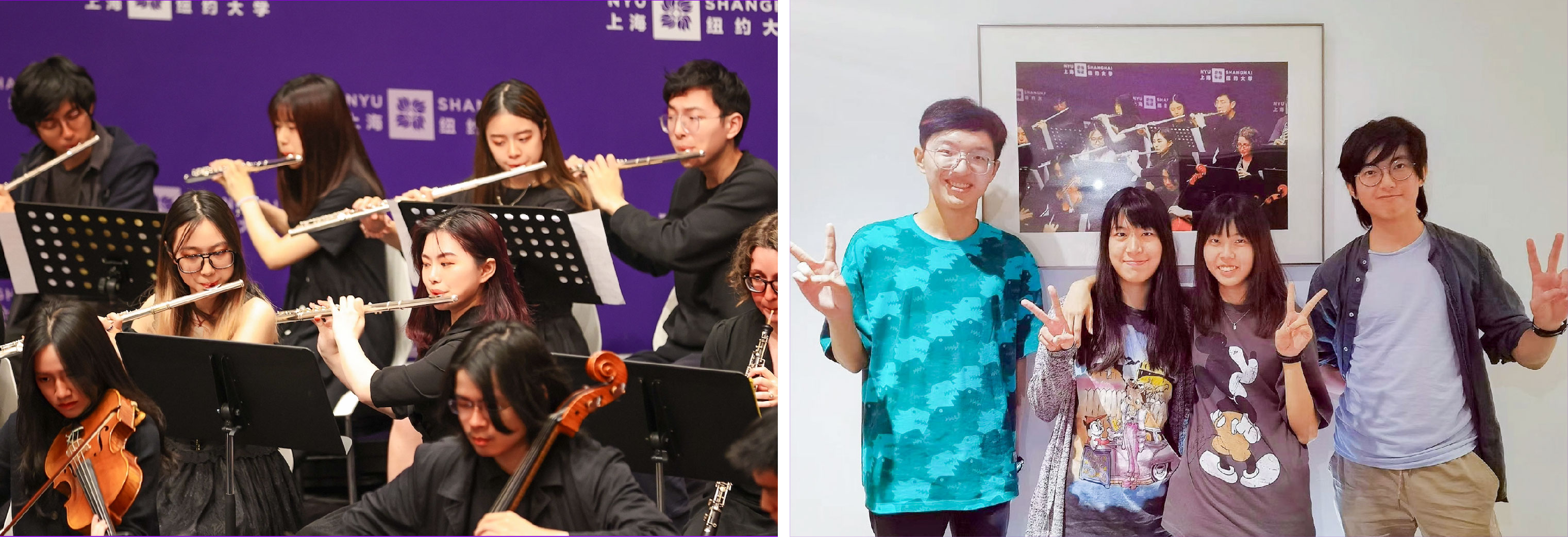
In his senior year of high school, Wang Yuhan ’24 set his sights on his dream school, NYU Shanghai. Wang, who has been fascinated by architecture since childhood, was excited about NYU Shanghai's liberal arts curriculum, the student-centered approach, and gaining access to the dedicated guidance from faculty. Four years later, as he prepares to graduate, Wang has a new goal: pursuing interactive design as his future career path.
 Wang Yuhan in the IMA studio on NYU Shanghai New Bund campus, Spring 2024.
Wang Yuhan in the IMA studio on NYU Shanghai New Bund campus, Spring 2024.
While at NYU Shanghai, Wang pursued a dual major in Interactive Media Arts (IMA) and Computer Science. Exploring the liberal arts curriculum allowed him to learn about different majors and explore his own strengths and interests. “IMA is a major that combines arts with the trend of computer science and AI, so I was aiming for this major ever since my freshman year,” he recalls. He added computer science to enrich his knowledge and skills.
In his junior year, Wang chose to study away in New York for the entire year, eager to be immersed in what he describes as “the world’s economic and cultural center.” After receiving funding from the 2022 Dean’s Undergraduate Research Fund (DURF) for a project on human computer interaction, he then joined NYU’s Future Reality Lab, using his funding to design and produce a modular interactive human-machine interface structure.
Studying in New York also offered opportunities to expand his mind. "It was an opportunity that cannot be missed to go there to study, explore, and exchange ideas with others," he says. On the weekends, Wang dived into the local arts and culture scene, attending movies, plays, concerts, operas, museums and city walks. “I believe the meaning of life is to pursue and experience different lifestyles,” he says. “The year in New York brought me so many new perspectives.”
 Left: Wang (third from the right in the back row) attended a contemporary ballet performance organized by his dormitory in New York with his classmates; Right: Tickets and mementos from Wang’s study away year in New York
Left: Wang (third from the right in the back row) attended a contemporary ballet performance organized by his dormitory in New York with his classmates; Right: Tickets and mementos from Wang’s study away year in New York
But it was in Shanghai that Wang’s interest in ancient Chinese architecture was nurtured. Wang took "Immersive Narrative for Chinese Monuments," a course co-taught by Associate Professor of Art History Zuo Lala and Assistant Arts Professor of IMA Wu-Wei Chen, in the second semester of his sophomore year. Wang and his groupmates used digital technologies such as 3D modeling and rendering to reconstruct the cave eaves of Huangze Temple in Guangyuan, Sichuan. While researching ancient texts and studying the current state of the grotto niches and Buddha statues, he received a great deal of guidance from Zuo.
After the course, Wang continued with his project. In fall of 2022, when Professor Zuo invited him to join the NYU Shanghai Digital Heritage Lab to showcase ancient Chinese architecture with digital approaches, he accepted without hesitation.
 Left: Wang (left) and Professor Zuo at the Digital Heritage Lab; Right: Wang’s work “Dynamic Roof”
Left: Wang (left) and Professor Zuo at the Digital Heritage Lab; Right: Wang’s work “Dynamic Roof”
It was there that Wang created “Dynamic Roof,” the work he is most proud of and which became the highlight of his graduate school application portfolio. While studying sectional drawing of Foguang Temple in Wutai Mountain, Shanxi Province he found a unique rhomboid-shaped proportional structure in the interlocking bracket sets and beams (known as dougong in Chinese) of ancient architecture. ”Dynamic Roof” transforms these bracket sets into a modularized and foldable structure. People can use any quantities of wooden blocks to construct roof structures similar to dougong brackets in the shape they like, and expand or compress the space beneath the roof according to their needs, just like building with LEGO blocks.
“The 'Dynamic Roof' is a breathing giant wooden structure, where interlocking wooden beams create a harmonious variation. The space beneath the eaves intertwines with people's daily lives.” Wang says. Professor Zuo says working with such a talented student was a pleasure. “I am glad to have such a diligent student who is interested in architectural design, and to communicate with him in both teaching and research, helping him to create distinctive works,” she says.
This September, after considering offers from Cornell, Columbia and Berkeley, Wang will instead embark on a new journey by pursuing a Master of Design Studies (MDes) degree at Harvard University's Graduate School of Design. Wang received offers for the Master of Architecture at Harvard as well, but decided design studies would be the right path. “MDes offers me more freedom, and leans towards interaction,” he explains. “I hope to deepen my research into architectural structures or using human-machine interfaces to improve people's living environments," he said.
As graduation approaches, Wang cherishes his time on campus even more. “I boldly ventured into unfamiliar fields and gradually discovered what truly resonates with me,” he says. What he will miss the most after leaving NYU Shanghai though, he says, is the group of like-minded friends he made in the Interactive Media Arts (IMA) major. "The unforgettable moments we shared, studying and envisioning the future together in the IMA studio, encouragement and support from friends have given me the confidence and courage to explore the unknown and go further. I hope that we can stay in touch even after graduation."
 Left: Wang (far left in the back row) performing in the end-of-semester show of "The NYU Shanghai Chamber Orchestra" course, taught by Associate Arts Professor of Music Cheng Yue in 2021; Right: Wang (far right) with classmates Ruan Hang ’24, Shen Shuyi ’24, and Wang Yiting ’24
Left: Wang (far left in the back row) performing in the end-of-semester show of "The NYU Shanghai Chamber Orchestra" course, taught by Associate Arts Professor of Music Cheng Yue in 2021; Right: Wang (far right) with classmates Ruan Hang ’24, Shen Shuyi ’24, and Wang Yiting ’24
 Left: Wang (standing center) with IMA friends outside the IMA studio on the 8F of the Century Avenue campus; Right: Wang (far right) with IMA friends at "88 Days Countdown to Graduation"
Left: Wang (standing center) with IMA friends outside the IMA studio on the 8F of the Century Avenue campus; Right: Wang (far right) with IMA friends at "88 Days Countdown to Graduation"

